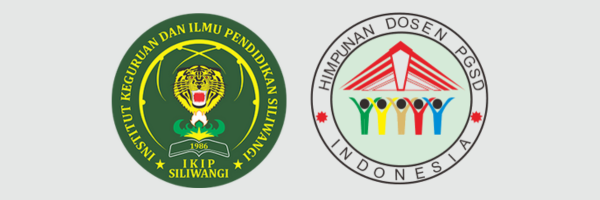Develop A Wordless Picture Book to Improve Critical Thinking Skills in Elementary School
DOI:
https://doi.org/10.22460/pej.v7i1.3323Abstrak
The purpose of this development research is to look at the making of a wordless picture book, to determine the level of validity, practicality, and effectiveness of the development of a wordless picture book. The research method used in this research is Research and Development (R&D), with the ADDIE development model. The validation of this wordless picture book was carried out by 3 experts. The results are 92,5% material expert, 92,5% linguist, and 92,5% media expert. The research subjects were fourth-grade students, totaling 20 students. The product trial phase uses one-to-one and small groups. The results of the research on the development of a wordless picture book that the practicality level of the teacher is 91,6% and the students are 88,6% based on the given instrument. Meanwhile, the effectiveness level of a wordless picture book is that the average post-test value is greater than the pre-test score (79,5 > 30,5). Based on the results of the t-test, tcount (14,41) > ttable (2,09), then the hypothesis (Ha)is accepted. Therefore, a wordless picture book is effectively used in learning.
Referensi
Ananda, R. (2019). Perenvanaan Pembelajaran (1st ed.). LPPPI Medan.
Birner, A., & Bromley, L. (2015). Critical Literacy: Using Picturebooks to Read the World. Journalism and Mass Communication, 5(3), 132–142. https://doi.org/doi: 10.17265/2160-6579/2015.03.004
Daryanto, & Karim, S. (2017). Pembelajaran Abad 21 (Turi (ed.); 1st ed.). Penerbit Gava Media.
Detikhot, T. (2022). Kontroversi Alshad Ahmad Pelihara 3 Ekor Harimau di Rumahnya. https://hot.detik.com/celeb/d-6054758/kontroversi-alshad-ahmad-pelihara-3-ekor-harimau-di-rumahnya?utm_source=copy_url&utm_campaign=detikcomsocmed&utm_medium=btn&utm_content=hot%0A%0ABaca artikel detikhot, %22Kontroversi Alshad Ahmad Pelihara 3 Ekor Harim
Eliza, D. (2018). Wordless and Picture Books Model Development based on Minangkabau Folklore to Build Early Childhood Character and Literacy. 1st International Conference of Innovation in Education, 499. https://doi.org/https://dx.doi.org/10.2991/icoie-18.2019.107
Facione, P. A. (1990). Critical Thinking: A Statement of Expert Consensus for Purposes of Educational Assessment and Instruction (ED 315 423; The Delphi Report). California Academic Press.
Facione, P. A. (2015). Critical Thinking: What It Is and Why It Counts. Measured Reasons LLC & Insight Assesment. https://www.researchgate.net/publication/251303244_Critical_Thinking_What_It_Is_and_Why_It_Counts
Grolig, L., Cohrdes, C., Tiffin-Richards, S. P., & Schroeder, S. (2019). Narrative dialogic reading with wordless picture books: A cluster-randomized intervention study. Early Childhood Research Quarterly, 51, 202. https://doi.org/https://doi.org/10.1016/j.ecresq.2019.11.002
Herliandry, L. D., Nurhasanah, Suban, M. E., & Kuswanto, H. (2020). Pembelajaran Pada Masa Pandemi Covid-19. Jurnal Teknologi Pendidikan, 22(1), 65–70. https://doi.org/https://doi.org/10.21009/jtp.v22i1.15286
Iriansyah, H. S. (2020). Membangun Kreativitas Guru dengan Inovasi Pembelajarandi Masa Pandemi Covid-19. Prosiding Pembicara Utama, 2–3. http://jurnal.stkipkusumanegara.ac.id/index.php/semnara2020/article/view/840
Lestari, I. (2018). Developing Wordless Picture Book to Improve The Storytelling Ability of 5 To 6 Years Old Children. Cakrawala Pendidikan, 1, 31. https://doi.org/https://doi.org/10.21831/cp.v37i1.13303
Lordanaki, L. (2021). Older Children’s Responses to Wordless Picturebooks: Making Connections. Children’s Literature in Education, 52, 493–510. https://doi.org/https://doi.org/10.1007/s10583-020-09424-7
Lysaker, J. T., & Alicea, Z. A. (2016). Theorizing fiction reading engagement during wordless book reading. Linguistics and Education, 37, 8. https://doi.org/http://dx.doi.org/10.1016/j.linged.2016.11.001
Moseley, D., Baummfield, V., Elliott, J., Higgins, S., Miller, J., & Gregson, M. (2009). Frameworks for Thinking (1st ed.). Cambridge University Press. https://doi.org/https://doi.org/10.1017/CBO9780511489914
Murtiningsih. (2016). Pembelajaran IPS SD (1st ed.). Universitas Negeri Malang.
Natalie A, H. (2013). The Positive Effects of Picture Books Providing Acceptance of Diversity in Social Studies and Increased Literacy in Early Childhood Education [State University of New York College]. http://hdl.handle.net/20.500.12648/5494
Nurhasanah, N., Nadiroh, & Maratun, N. (2019). Developed of Students Character at Elementary School through Wordless Picture Book. 1st International Conference on Education, Social Sciences and Humanities, 12–17. https://doi.org/https://dx.doi.org/10.2991/icesshum-19.2019.3
Ramos, A. M., & Ramos, R. (2011). Ecoliteracy Through Imagery: A Close Reading of Two Wordless Picture Books. Children’s Literature in Education, 42(4), 326. https://doi.org/10.1007/s10583-011-9142-3
Reyes, D. J. (1986). Critical Thinking in Elementary Social Studies Text Series. The Social Studies, 77(4), 154. https://doi.org/https://doi.org/10.1080/00377996.1986.9957424
Serafini, F. (2014). Exploring Wordless Picture Book. The Reading Teacher, 68(1), 24. https://doi.org/10.1002/trtr.1294
Siregar, N. S. S. (2013). Persepsi Orang Tua terhadap Pentingnya Pendidikan bagi Anak. Jurnal Ilmu Pemerintahan Dan Sosial Politik, 1(1), 11–27. https://doi.org/https://doi.org/10.31289/jppuma.v1i1.548
Sugiyono. (2013). Metode Penelitian Kuantitatif Kualitatif dan R&D (19th ed.). Alfabeta.
Surista, A., & Panjaitan, E. R. (2021). Keefektifan Strategi Pembelajaran Wordless Picture Book dalam Pembelajaran Menulis Deskriptif Mahasiswa Semester 1 STBA JIA Tahun 2020-2021. Jurnal Ennichi, 2(1), 14–21. http://ennichi.stba-jia.ac.id/index.php/ennichi/article/view/19
Winoto, Y. C., & Prasetyo, T. (2020). Efektivitas Model Problem Based Learning dan Discovery Learning Terhadap Kemampuan Berpikir Kritis Siswa Sekolah Dasar. Jurnal Basicedu, 4(2), 231. https://doi.org/https://doi.org/10.31004/basicedu.v4i2.348
Wooten, D., Clabough, J., & Blackstock, E. (2019). Elementary students socially construct their own historically-grounded wordless picture books. The Councilor: A Journal of the Social Studies, 80(2), 1–10. https://thekeep.eiu.edu/the_councilor/vol80/iss2/2?utm_source=thekeep.eiu.edu%2Fthe_councilor%2Fvol80%2Fiss2%2F2&utm_medium=PDF&utm_campaign=PDFCoverPages
Zarei, A. A., & Haghgoo, E. (2012). The Relationship between Critical Thinking and L2 Grammatical and Lexical Knowledge. English Linguistics Research, 1(1), 104–110. https://doi.org/http://dx.doi.org/10.5430/elr.v1n1p104












